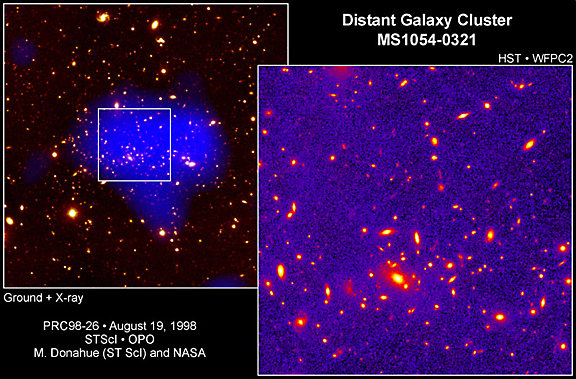

The image on the left is a color composite taken by ground-based and X-ray observatories showing the entire galaxy cluster surrounded by background and foreground galaxies. The blue color in the center of the image represents the huge amount of hot gas that fills the space between the galaxies in the cluster. This gas - colored blue - cannot be seen in visible light, but glows in X-ray frequencies. Astronomers have measured its temperature at 300 million degrees Fahrenheit. The X-ray information was used to estimate the cluster’s total mass. The boxed area in the center of the image pinpoints the Hubble telescope’s field of view.
By pure coincidence, in 1996 the Hubble telescope captured the light of an exploding star, supernova 1996CL, in this distant cluster of galaxies. At the time the Hubble pictures were taken, 1996CL was the most distant supernova known. Members of the Supernova Cosmology Project, led by Saul Perlmutter of Lawrence Berkeley Laboratory in California, used the 1996CL data to demonstrate that the Hubble telescope is capable of imaging distant supernovae and their host galaxies even halfway across the universe. Such distant supernovae are so far away that they are used to measure the acceleration or deceleration of the expansion rate of the universe, the goal of Perlmutter's Supernova Project.